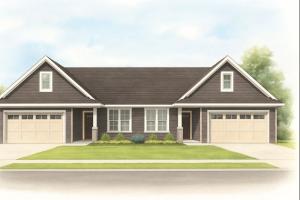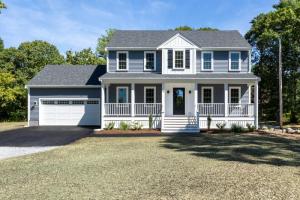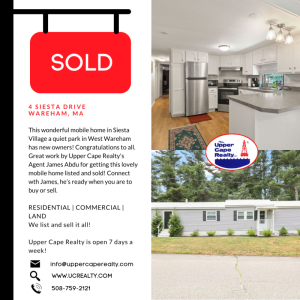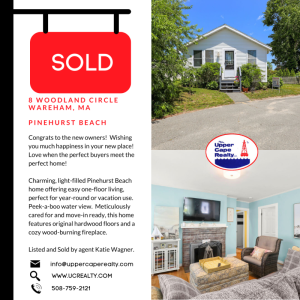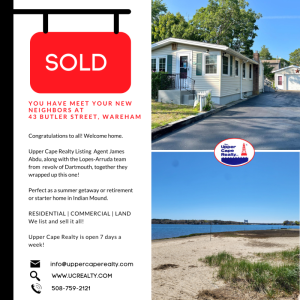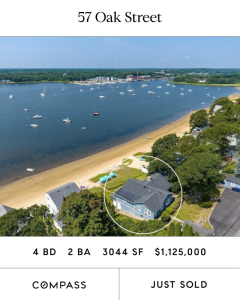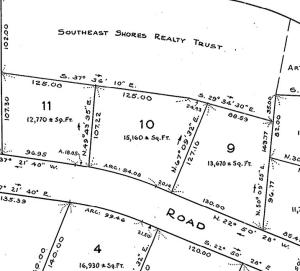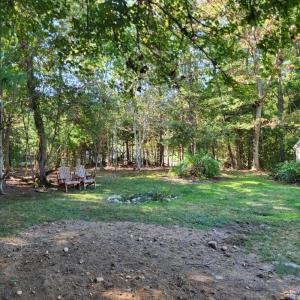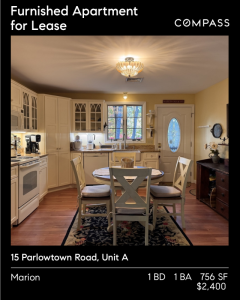Telling the history of First Congregational Church of Marion
 The sermon, originally given by his great-great grandfather in 1861, was delivered by Stephen Cobb on Feb. 21. Photo by: Aidan Pollard.
The sermon, originally given by his great-great grandfather in 1861, was delivered by Stephen Cobb on Feb. 21. Photo by: Aidan Pollard. Board of Deacons Director George Linzee led the Feb. 21 service and the subsequent question-and-answer session. Photo by: Aidan Pollard.
Board of Deacons Director George Linzee led the Feb. 21 service and the subsequent question-and-answer session. Photo by: Aidan Pollard. The church once congregated at the old Captain’s Meeting House, now the Marion General Store. Photo Courtesy: Sippican Historical Society.
The church once congregated at the old Captain’s Meeting House, now the Marion General Store. Photo Courtesy: Sippican Historical Society.  A copy of the original print of the sermon in 1862. Photo Courtesy: First Congregational church of Marion.
A copy of the original print of the sermon in 1862. Photo Courtesy: First Congregational church of Marion.  The sermon, originally given by his great-great grandfather in 1861, was delivered by Stephen Cobb on Feb. 21. Photo by: Aidan Pollard.
The sermon, originally given by his great-great grandfather in 1861, was delivered by Stephen Cobb on Feb. 21. Photo by: Aidan Pollard. Board of Deacons Director George Linzee led the Feb. 21 service and the subsequent question-and-answer session. Photo by: Aidan Pollard.
Board of Deacons Director George Linzee led the Feb. 21 service and the subsequent question-and-answer session. Photo by: Aidan Pollard. The church once congregated at the old Captain’s Meeting House, now the Marion General Store. Photo Courtesy: Sippican Historical Society.
The church once congregated at the old Captain’s Meeting House, now the Marion General Store. Photo Courtesy: Sippican Historical Society.  A copy of the original print of the sermon in 1862. Photo Courtesy: First Congregational church of Marion.
A copy of the original print of the sermon in 1862. Photo Courtesy: First Congregational church of Marion. Story Location
United States
MARION — From the Revolutionary War to the Civil War to now, the First Congregational Church of Marion has seen it all.
Marion First Congregational and the Sippican Historical Society resurfaced a sermon from 1861 given by Reverend Leander Cobb, which went through the church’s history until that point.
The Feb. 21 sermon was given by Leander Cobb’s great, great grandson, Stephen Cobb, and told the story of the church’s founding.
The church was first officially settled in 1703 by Reverend Samuel Arnold — but the reverend had been preaching to the community for 16 years prior.
“The location of that ancient house, tradition tells us, was near the great rock, and the ancient graveyard,” the sermon read.
The church was officially settled at the old Captain’s Meeting House, which is now the Marion General Store — right across the street from the current location of Marion First Congregational.
At its start, the congregation had 35 members, and grew until the church had to move due to spatial constraints.
The congregation moved to what is now the Rochester First Congregational Church, and continued to evolve until plants, or sister churches, congregated in Marion and Mattapoisett.
Those plants were the result of both a growing congregation and religious rifts stemming from the Great Awakening.
The Marion church — then called South Church — was built under the supervision of the four captains of the original Captain’s Meeting House.
When it came time to construct the church’s clock tower, one of the captain’s decided not to help fund the effort. So, when the tower was built, the blank side was made to face the South — toward the reluctant captain’s house.
In Elizabeth Taber’s time as a member of the congregation, she repeatedly offered donations to the church, but the captains decided they wouldn’t take charity from a woman. At least until Taber decided to donate the church’s organ.
“Faith and finance, it’s kind of interesting,” Board of Deacons Director George Linzee said in a question-and-answer session following the sermon.
In 1799, Oliver Cobb was called to the churches in both Rochester and Marion — then called South Church — until he became the sole minister of South Church 26 years later.
Cobb’s duty at the two congregations informed the location of the church’s house — the Silvershell Inn — because of its proximity to both Marion and Rochester.
In 1841, Leander Cobb became minister of the church, giving the historic sermon 20 years later.
“Keep in mind this is 1861 when the sermon was delivered,” Linzee said. “The country was in a civil war.”
With all the splits and shifts the church has experienced throughout its history, Linzee said it’s important to avoid division — both politically and religiously.
“I would echo that nothing is really built when there’s division,” Stephen Cobb said.
He added that among the lessons of the sermon was that “we need people to stand up and be counted on.”


























